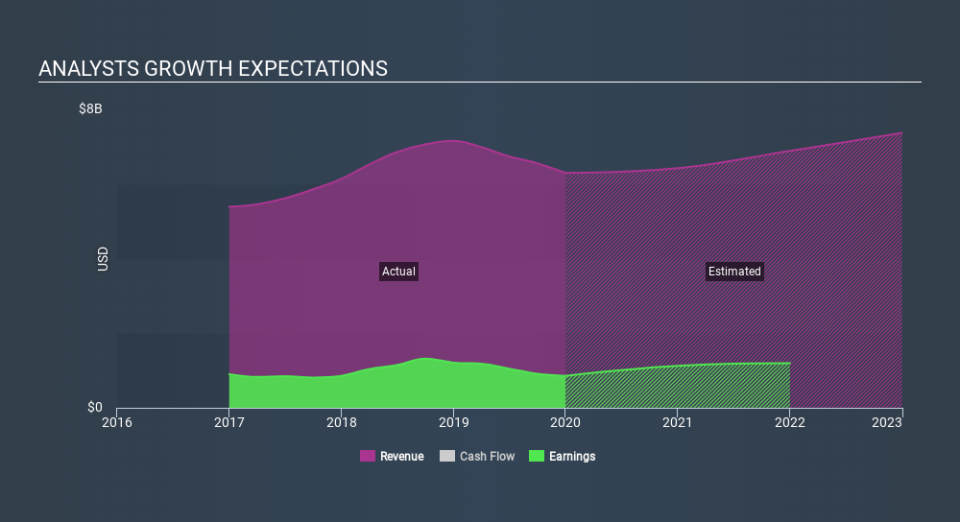Celanese Corporation Earnings Missed Analyst Estimates: Here's What Analysts Are Forecasting Now

Last week, you might have seen that Celanese Corporation (NYSE:CE) released its full-year result to the market. The early response was not positive, with shares down 9.6% to US$104 in the past week. Statutory earnings per share fell badly short of expectations, coming in at US$6.84, some 20% below analyst forecasts, although revenues were okay, approximately in line with analyst estimates at US$6.3b. Analysts typically update their forecasts at each earnings report, and we can judge from their estimates whether their view of the company has changed or if there are any new concerns to be aware of. We've gathered the most recent statutory forecasts to see whether analysts have changed their earnings models, following these results.
Check out our latest analysis for Celanese
Following last week's earnings report, Celanese's ten analysts are forecasting 2020 revenues to be US$6.42b, approximately in line with the last 12 months. Statutory earnings per share are expected to shoot up 50% to US$10.39. In the lead-up to this report, analysts had been modelling revenues of US$6.65b and earnings per share (EPS) of US$10.66 in 2020. Analysts are less bullish than they were before these results, given the reduced revenue forecasts and the minor downgrade to earnings per share expectations.
Despite the cuts to forecast earnings, there was no real change to the US$126 price target, showing that analysts don't think the changes have a meaningful impact on the stock's intrinsic value. It could also be instructive to look at the range of analyst estimates, to evaluate how different the outlier opinions are from the mean. The most optimistic Celanese analyst has a price target of US$140 per share, while the most pessimistic values it at US$106. The narrow spread of estimates could suggest that the business' future is relatively easy to value, or that analysts have a clear view on its prospects.
One way to get more context on these forecasts is to look at how they compare to both past performance, and how other companies in the same industry are performing. We would highlight that Celanese's revenue growth is expected to slow, with forecast 2.0% increase next year well below the historical 2.8%p.a. growth over the last five years. Compare this against other companies (with analyst forecasts) in the market, which are in aggregate expected to see revenue growth of 3.5% next year. So it's pretty clear that, while revenue growth is expected to slow down, analysts still expect the wider market to grow faster than Celanese.
The Bottom Line
The biggest concern with the new estimates is that analysts have reduced their earnings per share estimates, suggesting business headwinds could lay ahead for Celanese. Unfortunately, analysts also downgraded their revenue estimates, and our data indicates revenues are expected to perform worse than the wider market. Even so, earnings per share are more important to the intrinsic value of the business. The consensus price target held steady at US$126, with the latest estimates not enough to have an impact on analysts' estimated valuations.
Still, the long-term prospects of the business are much more relevant than next year's earnings. We have forecasts for Celanese going out to 2022, and you can see them free on our platform here.
You can also view our analysis of Celanese's balance sheet, and whether we think Celanese is carrying too much debt, for free on our platform here.
If you spot an error that warrants correction, please contact the editor at editorial-team@simplywallst.com. This article by Simply Wall St is general in nature. It does not constitute a recommendation to buy or sell any stock, and does not take account of your objectives, or your financial situation. Simply Wall St has no position in the stocks mentioned.
We aim to bring you long-term focused research analysis driven by fundamental data. Note that our analysis may not factor in the latest price-sensitive company announcements or qualitative material. Thank you for reading.

